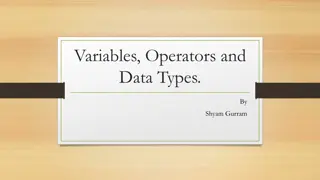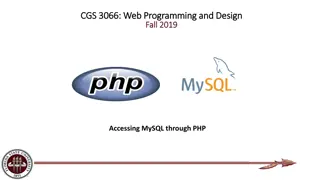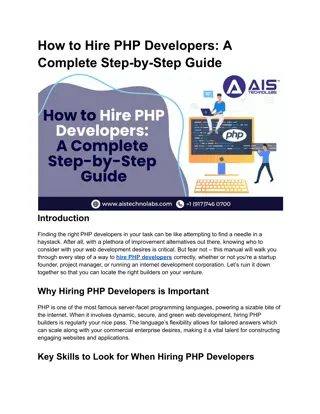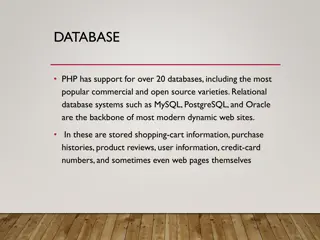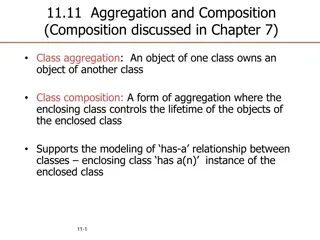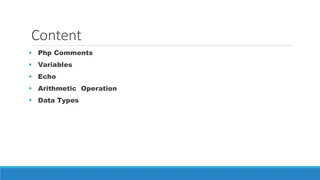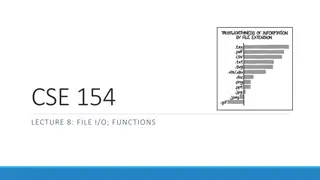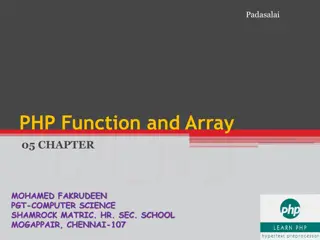
Creating Modular Object-Oriented PHP Code
Learn how to create modular object-oriented PHP code by organizing your classes into dedicated files and incorporating them into your main PHP pages. Understand the fundamentals of classes, properties, and methods in OOP PHP programming.
Download Presentation

Please find below an Image/Link to download the presentation.
The content on the website is provided AS IS for your information and personal use only. It may not be sold, licensed, or shared on other websites without obtaining consent from the author. If you encounter any issues during the download, it is possible that the publisher has removed the file from their server.
You are allowed to download the files provided on this website for personal or commercial use, subject to the condition that they are used lawfully. All files are the property of their respective owners.
The content on the website is provided AS IS for your information and personal use only. It may not be sold, licensed, or shared on other websites without obtaining consent from the author.
E N D
Presentation Transcript
First thing we need to do is create two PHP pages: index.php class_lib.php OOP is all about creating modular code, so our object oriented PHP code will be contained in dedicated files that we will then insert into our normal PHP page using php 'includes'. In this case all our OO PHP code will be in the PHP file: class_lib.php
You define your own class by starting with the keyword 'class' followed by the name you want to give your new class. <?php class person { }
One of the big differences between functions and classes is that a class contains both data (variables) and functions that form a package called an: 'object'. When you create a variable inside a class, it is called a 'property'. <?php class person { var $name; } Note $name;) are called 'properties'. Note: The data/variables inside a class (var
In the same way that variables get a different name when created inside a class(they are called: properties,) functions also referred to by a different name when created inside a class they are called 'methods'. A classes' methods are used to manipulate its' own data / properties.
<?php class person { var $name; function set_name($new_name) { $this->name = $new_name; } function get_name() { return $this->name; } }
We functions/methods: get_name() and set_name(). STEP 6: The '$this' The $this is a built-in variable (built into all objects) which points to the current object. Or in other words, $this is a special self-referencing variable. have created two interesting STEP 6: The '$this' variable variable
You use $this to access properties and to call other methods of the current class. function get_name() { return $this->name; }
You would never create your PHP classes directly inside your main php pages. Instead, it is always best practice to create separate php pages that only contain your classes. Then objects/classes by including them in your main php pages with either a php 'include' or 'require'. you would access your php
<html> <head> <title>OOP in PHP</title> <?php include("class_lib.php"); ?> </head> <body> </body> </html>
<?php include("class_lib.php"); ?> </head> <body> <?php $stefan = new person(); ?> </body> </html>
The handle/reference to our newly created person object. STEP To create an object out of a class, you need to use the 'new' keyword. When creating/instantiating a class, you can optionally add brackets to the class name. variable $stefan becomes a STEP 9 9: : The The 'new' 'new' keyword keyword
As we did in the example below. To be clear, you can see in the code below how we can create multiple objects from the same class. <body> <?php $stefan = new person(); $jimmy = new person(); ?> </body>





